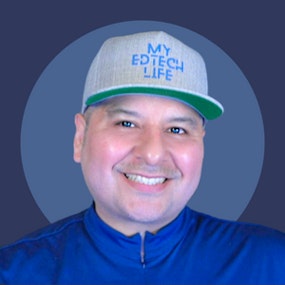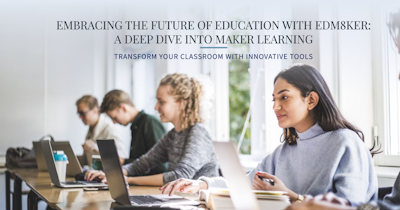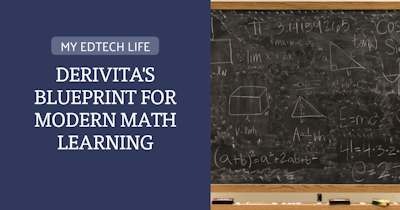I recently had the pleasure of interviewing Ginger Dewey on my podcast, My EdTech Life. Ginger is a former math teacher and faculty trainer who has dedicated her career to making education more accessible for all students.
Our conversation centered around the importance of universal design for learning (UDL) and how tools created for accommodations can benefit every student. As an educator myself, I was fascinated to get Ginger’s insight on this topic.
One story that resonated with me was about a blind student Ginger taught in college algebra. Since the course relied heavily on graphing, Ginger had to get creative in order for this student to learn the material. She made a tactile graphing board with yarn and pushpins, allowing the student to “see” the graphs through touch.
While this technique was designed specifically for this one visually impaired student, Ginger realized it could help other students grasp graphing concepts in a concrete way before moving to the more abstract. Her approach showed me how accommodations for some can become effective learning tools for all if we keep an open and curious mindset.
Ginger also discussed the power of text-to-speech tools like ReadSpeaker in making content accessible. As an English language learner myself, I was excited to learn that features like enlarged text, adjustable reading speed, and text highlighting can aid comprehension for students learning a new language. By seeing and hearing words simultaneously, students can pick up on pronunciation patterns that are hard to detect when reading silently.
Beyond assistive technology, Ginger emphasized the need for teachers to embrace change and give students ownership over their learning. On the first day of class, she would demonstrate text-to-speech tools and encourage students to customize the settings to their liking. This simple invitation shifted students from passive to active participants in accessing course material.
Ginger acknowledged that change can be intimidating for teachers set in their ways. But opening your practice to student input fosters independence and engagement. It also positions you as a “guide on the side” rather than the sole authority in the classroom.
This willingness to learn from students resonated strongly with me. As digital natives, students can offer fresh perspectives on technology tools we may not fully grasp. Rather than feel threatened if a student discovers an innovative use for an accommodation tool, we should celebrate that creativity. Our classrooms become richer when we approach accessibility as a collaborative effort.
My biggest takeaway from speaking with Ginger was that we need to rethink accommodations as specialized fixes. In reality, these tools give all students the flexibility to learn in a style best suited to their needs. With some creativity, we can provide options that don’t isolate or stigmatize anyone.
My conversation with Ginger reminded me that teaching is not a static practice. As education changes, we need to continually refine our approach to reach all students. Even modest innovations like text-to-speech can have an exponential impact when made widely accessible. It takes an open mind, but small steps toward inclusion make our schools better for everyone.
You can watch or listen to the full episode by visiting my website at https://www.myedtech.life/dewey/
I want to thank our blog sponsor Alongside.care
🌟 Discover how @alongside_care is transforming education and fostering a culture of well-being for students everywhere. Check out their inspiring stories and resources to empower young minds.









